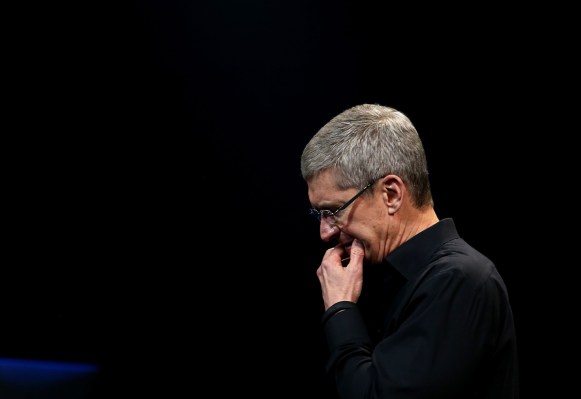As we head into the end of 2017, it’s pretty safe to say that Apple’s fate — barring any major issue with its phones — is now in the hands of its consumers.
With the iPhone X now in stores (well, sort of — if you catch them at the right time), Apple has now laid down its hand and waits to see where consumer demand lands. Its bid to unlock a higher-tier consumer could indeed end up creating a ton of value for the company, which has spent the past year looking to reignite growth in its core driver.
While the iPad and Mac continue to contribute, Apple’s fate largely rests on the success of the iPhone X. Apple this year has increasingly looked like it’s on a real pathway to becoming a $1 trillion company, and now the holiday quarter is going to show if it’ll be able to pull that off.
And the signals are definitely there. Apple briefly tapped a $900 billion market cap, though it’s slipped since then. That $1 trillion goal is just a jump of a bit more than 10 percent for the company, though for Apple that means adding more than $100 billion in value. But this year alone, shares of Apple are up nearly 50 percent as it increasingly looks like Apple is getting its act together after a middling 2016.
Apple can aggressively invest in marketing, advertising or other channels to try to get the attention of consumers. But the phone is out there, people say it’s great and the price is already set. Apple’s immediate challenge may be to convince users to get the phone or sign up for its subscription upgrade plan. But with the holiday quarter hitting its critical juncture, consumers will very soon make their decision as to whether Apple’s interpretation of the next generation of smartphones is the right one. And it’s going to rest on whether or not Apple’s bid to unlock a new tier of paying customers is going to play out the way it expects.
If Apple is going to hit $1 trillion, it’s going to have to have a portfolio of products that allow it to incrementally increase the total market it can attack. This is typically referred to as TAM (total addressable market), and for a while it looked like Apple may have hit the upper bound of that as the iPhone hit a saturation point with consumers. So Apple has made a big bet to increase that possibility to ratchet up that least upper bound: seeing if people will pay more for its products. And that meant coming out with a phone that costs nearly $1,200 in the United States.
With the fall launches, Apple now has three pricing tiers to go with its products. You pay a lot of money for a big phone, a lot more money for a bigger phone and a lot more money than that to get a premium next-generation phone. That gives Apple an opportunity to tap the rabid early-adopter fan base that got people excited about the iPhone in the first place — the ones who may be willing to fork out more money to get early access to features that may one day be what a next-generation smartphone looks like.
And the iPhone X certainly has those features. The screen fits to the edges of the device. The home button is gone, now replaced by its interpretation of it as software. It has the ability to unlock itself with your face. It includes wireless charging (which the iPhone 8 also has), which seems more of a novelty for now as the technicals evolve. But more importantly, it aims to feel like a next-generation phone, packaging all the best notions that have incrementally pushed forward the bounds of a smartphone in one neat product at a high price point.
And the success of that is, indeed, a frustrating uncertainty. Apple initially seemed to be unable to get enough phones into the hands of consumers, though that seems to have leveled out a bit — checking the Apple Store indicates that the shipping time is now one to two weeks. But despite widely positive reviews, Wall Street still seems to be waiting on the right signals to give Apple the green light to race to a $1 trillion valuation.
Apple’s own expectations for the holiday quarter bring it back to a growth phase, though this is always the most critical quarter for the company. It’s when it’s going to sell the most phones, but it’s also when Apple is able to thoroughly test the appetite for its new phones. This holiday quarter is going to give Apple the opportunity to see if its users are ready to spend nearly $1,200 on a phone — quite a bit more than the norm.
So, at a mechanical level, this is a way to continue to grow its business. It can release new products like the HomePod or AirPods, or continue to build out its services business as it looks to continue to lock in its users. But because the iPhone is its sweet spot, if it can figure out a way to eke more value out of that business, it basically just gives Wall Street an opportunity to take additional value onto its market cap — even if it’s just a function of the amount of money it makes and the revenue it projects for the next round.
But Apple has really always been a premium product. Though accessible to a wide array of users, Apple wants to have that shine that the company has a robust ecosystem that it’s able to ensure has a high quality. Apple is going to look to tap that shine that made it the original harbinger of the smartphone era — and its hopes of becoming a $1 trillion company are now more or less a waiting game to see how the story plays out.
